Food for thought - Warsaw Uprising Monument, Poland
During my trip last year to Poland and some of the Baltic countries, I learned a lot about modern-day history and the impact the Soviet Union had in the region. My first lesson was at the PKiN in Warsaw, and the next one was at the Warsaw Uprising Monument which is what today's post is about.
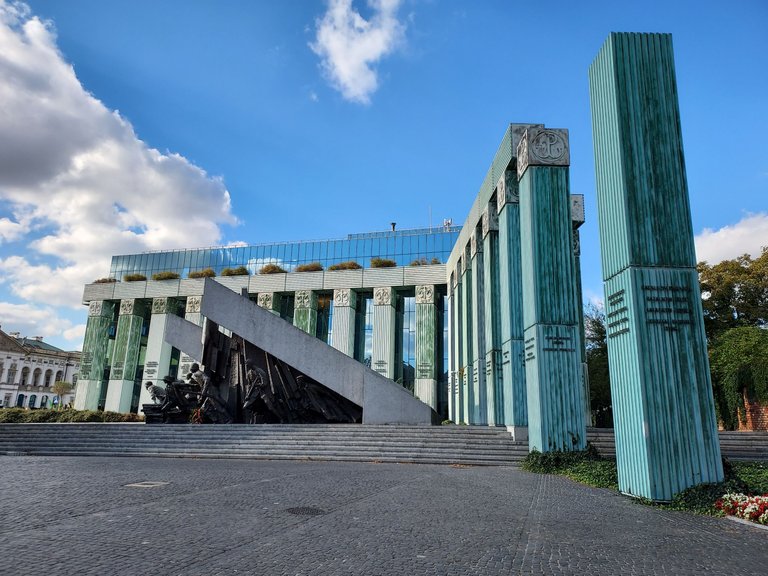
It was my hubby who said we should come here, I didn't know about it, nor what the uprising movement was at the time. After visiting, I knew why he wanted to come.
There was a little museum just around the corner from the monument and we went in first. I'm glad we did, as it gave a perspective on things and a crash course for me on the whole event. The uprising happened when Poland was under German occupation during the second world war. The information board at the monument will tell you what happened.
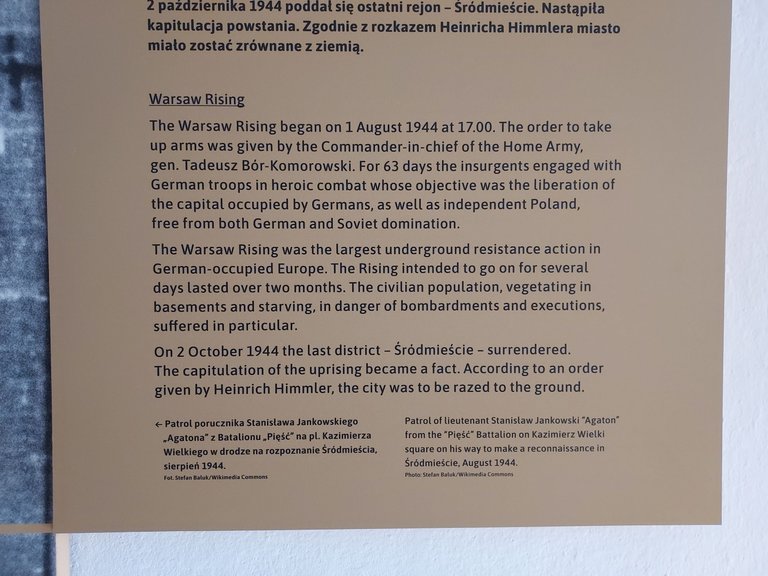
Well, it does and it doesn't. What it doesn't tell you is that around this time, the Germans knew the alliance, led by the Soviets. were about to arrive, and they had planned to retreat from Warsaw. The Polish Home Army saw this as the perfect opportunity to start the uprising, and reclaim their country with Soviet's support. Except, the Soviets never arrived as planned, and the Home Army were left to defend for themselves.
Stalin knew that if Poland was liberated, they would form a pro western democratic county, but he wanted Poland under his communist empire. The best thing to do, was therefore let the Polish Home Army hang to dry. During the two months uprising, it's estimated 16 thousand from the Home Army died, and around 200 thousand civilian were killed. By the time the German's finally left Warsaw, they deliberately destroyed pretty much all of the city, just because they could. "The city must completely disappear from the surface of the earth" was what they said.
With the Germans gone and Poland battered to near death, now it was time for the Soviets to swoop in. Stalin took Poland under his communist wing and created the People's Republic of Poland. The heroism of the Home Army and uprising movement was a taboo and was not allowed to be mentioned. This lasted till 1988 when the Warsaw Uprising Monument was constructed, followed by Poland independence in 1993.
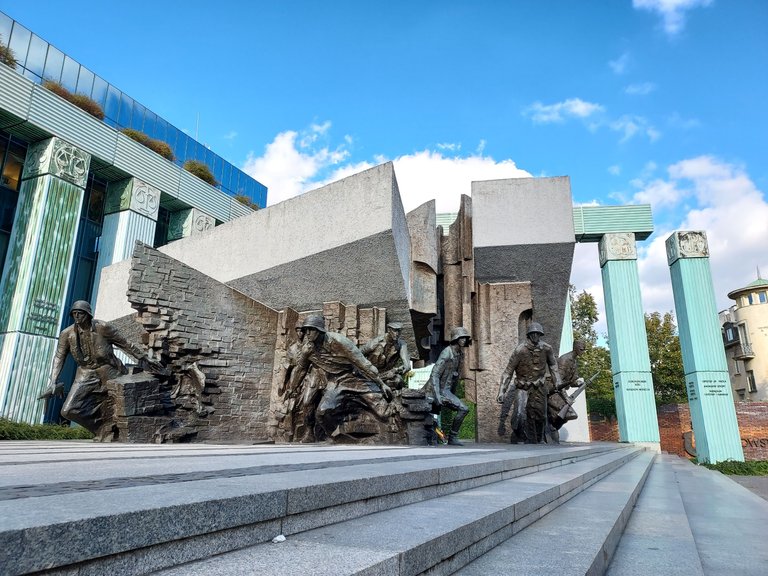
I'm glad I went to the little museum first before coming over to the monument. Knowing the background, meant I wasn't just looking at some cold bronze meaningless sculpture.
There were two main parts to the monument. The first was the bigger section showing men fighting amongst rubble. When you're standing in front of a 10m tall sculpture, it makes everything feel so real. Their movements, the facial expressions, the weapons they're holding, and their attire seems to bring the situation to life.

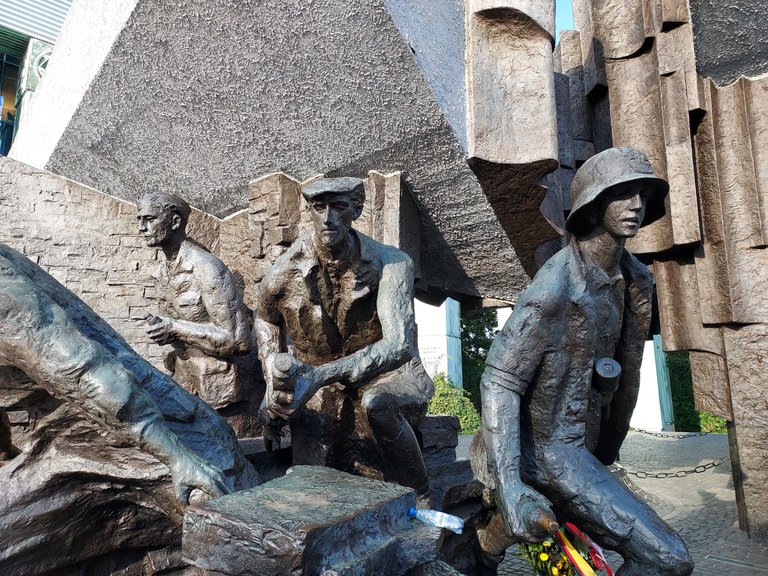
The other part of the monument consist of a few men huddled together, with one showing only his top half of his body. This particular sculpture depicts him going in (or coming out of?) a manhole. During the uprising, the underground sewage system played a big part in helping the Home Army move around undetected.
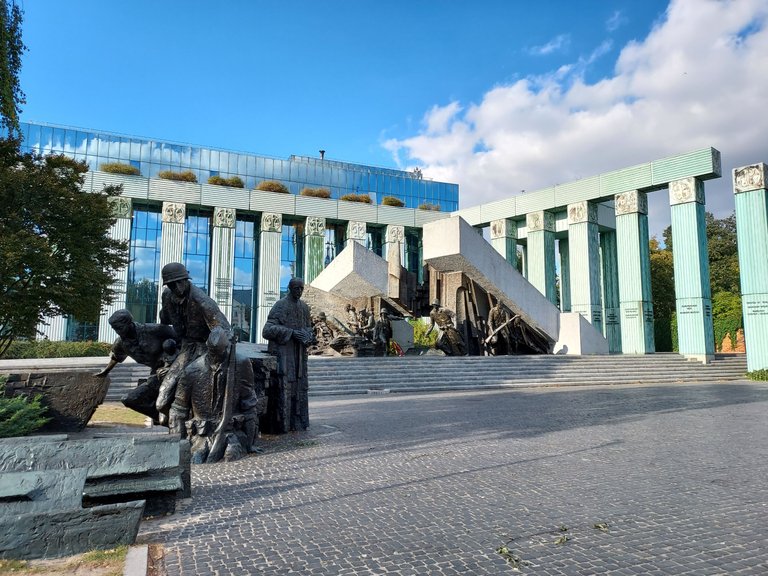
Despite it being a very nice day, it was a poignant visit. And especially so for my husband. He was quite moved by all this because he comes from Hong Kong, and a few years ago there was an uprising movement against the China iron fist rule. Unlike the Home Army, the Hong Kong uprising movement was less military or coordinated. It was actually a perfect example of a decentralised movement. And like the Home Army, the uprising in Hong Kong also failed and now everyone is silenced and many have been prisoned for taking part. I think in both cases, everyone fought for what they believe, and there was no guarantee of success or victory. But that didn't deter people from fighting even if it means losing freedom or your life. Trying to make the world a better place is the least one can do for the next generation.
Food for thought.
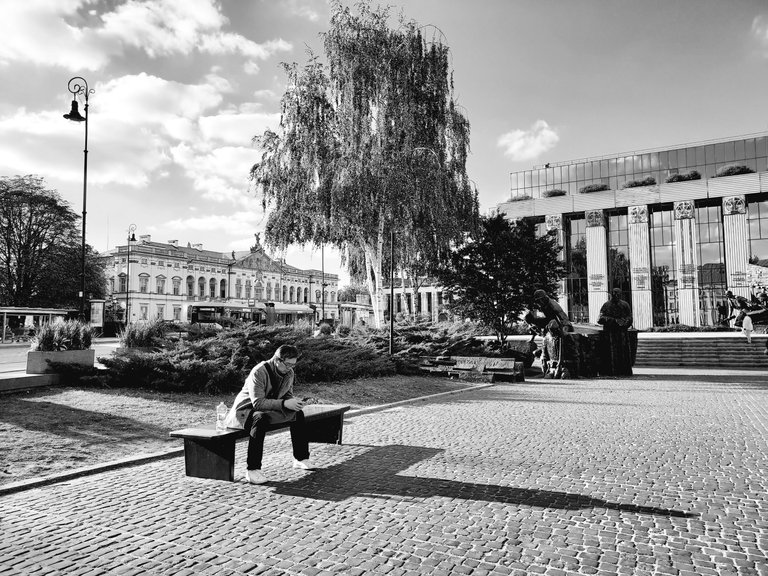


Hi @livinguktaiwan,
Thank you for participating in the #teamuk curated tag. We have upvoted your quality content.
For more information visit our discord https://discord.gg/8CVx2Am
Thanks for the interest post I'm always curious about historical monuments and and I'm so happy when someone write about them.
Thanks. Learning about the background made so much difference otherwise to most people, myself included, a sculpture is a sculpture, and it has no life or meaning
Brilliant post, Stalin as despicable as he was knew exactly what he was doing.
It's so terrfying, and many people who suffered during that period are still around today living through those terrible times
It’s why a lot of pol’s settled in the uk after ww2 and then a slow migration continues after.
Guess so, and pre-Brexit, there were also many poles who came to Britain as seasonal workers.
It's quite the monument and quite the historic event. Monunents and such things are all the more impactful when you have a personal connection to them in some way. Glad you guys were able to go see it.
On another completely different note, is Pinmapple done now? I haven't seen a post from them in forever
We often see a lot of monuments around, I'm sure they're all there for a good reason, it's just that we don't know about it most of the time.
Pinmapple is still here!!! Our absence is because Hive SQL was hacked a few weeks ago and our whole operation relies on it. We did an announcement on Discord when it first happened and thought it would be back up pretty soon, but it's taken longer than expected. We just posted an update. Thanks for asking
Yes very true. Monuments are much more interesting amd thought provoking when you know more of the story behind them.
I saw the post. Thanks for the update!
Nice post, @livinguktaiwan. What Stalin did is abominable. I imagine it was quite overwhelming, seeing the monument and learning about what it represented...
It certainly makes a difference when you know the story behind it, and sadly Soviet and now Russia seems to be going round in circles, some things never change
Thank you for bringing us this glimpse of Polish history, @livinguktaiwan. Particularly important to know all of the details of timing, etc. in understanding it properly.
Stalin "bled them out," before taking over, to lessen resistance to what he knew was coming to the Polish people. So sad ... We can only imagine what those inside this movement must have felt, upon learning they had been betrayed.
This succinctly states it, I believe. Here in America, after our Revolutionary War against a superior force against which there was supposedly no hope, this mindset carried people through it. Most notably enshrined in the state motto of New Hampshire:
Very good that you could close on noting the memory of these brave people was revived in 1988. Hopefully, the Polish people never let that memory fade.
It has to very brave souls to start a revolution, it's all or nothing, once you've started there's no turning back, Live Free or Die is so very true. One only needs to look at modern-day Russia now, another brave soul lost. Hopefully his sacrifice will not go in vain.
Amen, @livinguktaiwan ...
... as it was extraordinary that he elected to return to Russia, after his unbelievable recovery from poisoning. He must have been very clear about what awaited him there.
What I have never personally seen anything written about it, was did he return with at least some hope for support from others? And did this brave man die, disappointed by the response?
I don't know. But, it takes us full circle back to a central point of your post here, about this memorial to brave Polish people who were betrayed ...
Wow, I wouldn't have guessed that it was just that short time ago that Poland gained its independence.
Gorbachev's perestroika in the 80s changed so much in the European landscape, and yeah, for Gen X and mellenials, it's pretty recent!!
The statue on this monument full of history looks very iconic, seeing it makes me think of an event in the past, it is an extraordinary monument
Do you have a similar uprising movement in your country in the past? Seems like many countries have been through similar turbulent times
The countries of the former warsaw pact, have such a tragic but fascinating history and stories to tell, from the last century. Love this
Thanks! 😊
That's what I love about travelling, you learn so much and pick up lots of interesting information
got that spot on,
Thanks for the interesting walk.
I would like to make some small clarifications
The Germans captured Poland in less than three months; Soviet troops would not have had time to help even if they wanted to.
The uprising happened in 1944 just before the German occupation ended, not before
As I understand it, the idea was that the Alliance, led by the Soviets would help the Home Army drive the Germans out of Poland and it would be over in a few days. Instead, Stalin stalled his men, the Home Army was left on its own, outnumbered by the Germans, and the uprising lasted for two months instead of a few days.
But thanks for your comment, and glad you enjoyed the walk.
the end of the German occupation ended with the victory of the Red Army. The occupation did not end by itself.
The fate of Poland was decided on August 23 in Moscow, when the Molotov-Ribbentrop Pact was signed.
The Soviet-German Pact was concluded after Hitler had seized the remnants of Czechoslovakia in accordance with the Munich agreements and immediately began to lay claim to Poland - showing himself in all his glory.
On September 1, 1939, Hitler attacked Poland. In 17 days at 6 a.m. the Red Army with large forces (21 rifle and 13 cavalry divisions, 16 tank and 2 motorized brigades, in total 618 thousand people and 4733 tanks) crossed the Soviet-Polish border from Polotsk to Kamenets-Podolsk
For Poland, the German-Russian partition of 1939 was the fourth.
Already on September 3, Hitler began to urge Moscow to act as soon as possible - because the war was not unfolding quite as he wanted, but, most importantly, to induce Britain and France to recognize the USSR as the aggressor and declare war on it together with Germany...
There is a lot of disagreement in the current views of historians. And you can find confirmation of almost any theory on the internet.
I do not claim that my version is the truth, but it seems to me, taught so in school, that everything was approximately so)))
The walk is great.
I would like to see more historically significant places in the hive. Thank you!
Your post is very nice. And very emotional.. Thank you..
Thanks, glad you enjoyed reading it
The sculptures would be meaningless without a story, I absolutely agree with that. The most impressive part is the story. The last photo is very beautiful.
Thanks Mustafa! I like reading stories and learning about a place when I go away, hopefully one day I will make it to Turkey as you have so much rich history
That would be awesome! Looking forward to see you in Turkey, please let me know when you come :)
I love historic places. It is very important to know our history. Because: He who does not know his history is condemned to repeat it.
Jorge Agustín Nicolás Ruiz de Santayana
Everything you felt while visiting here shines through in the way you discuss this period in Polish history. This was a wildly interesting read, and gave me something to look up later:
That is fascinating! I have some tabs open to read about that for later tonight now. 😄
Thanks for the engaging history brush up! 😎
Congratulations, your post has been added to Pinmapple! 🎉🥳🍍
Did you know you have your own profile map?
And every post has their own map too!
Want to have your post on the map too?
A great visit to the Museum. You are right that those statues were looking like real.
Hello livinguktaiwan!
It's nice to let you know that your article won 🥇 place.
Your post is among the best articles voted 7 days ago by the @hive-lu | King Lucoin Curator by hallmann
You and your curator receive 0.2773 Lu (Lucoin) investment token and a 11.74% share of the reward from Daily Report 223. Additionally, you can also receive a unique LUGOLD token for taking 1st place. All you need to do is reblog this report of the day with your winnings.
Buy Lu on the Hive-Engine exchange | World of Lu created by @szejq
STOPor to resume write a wordSTART